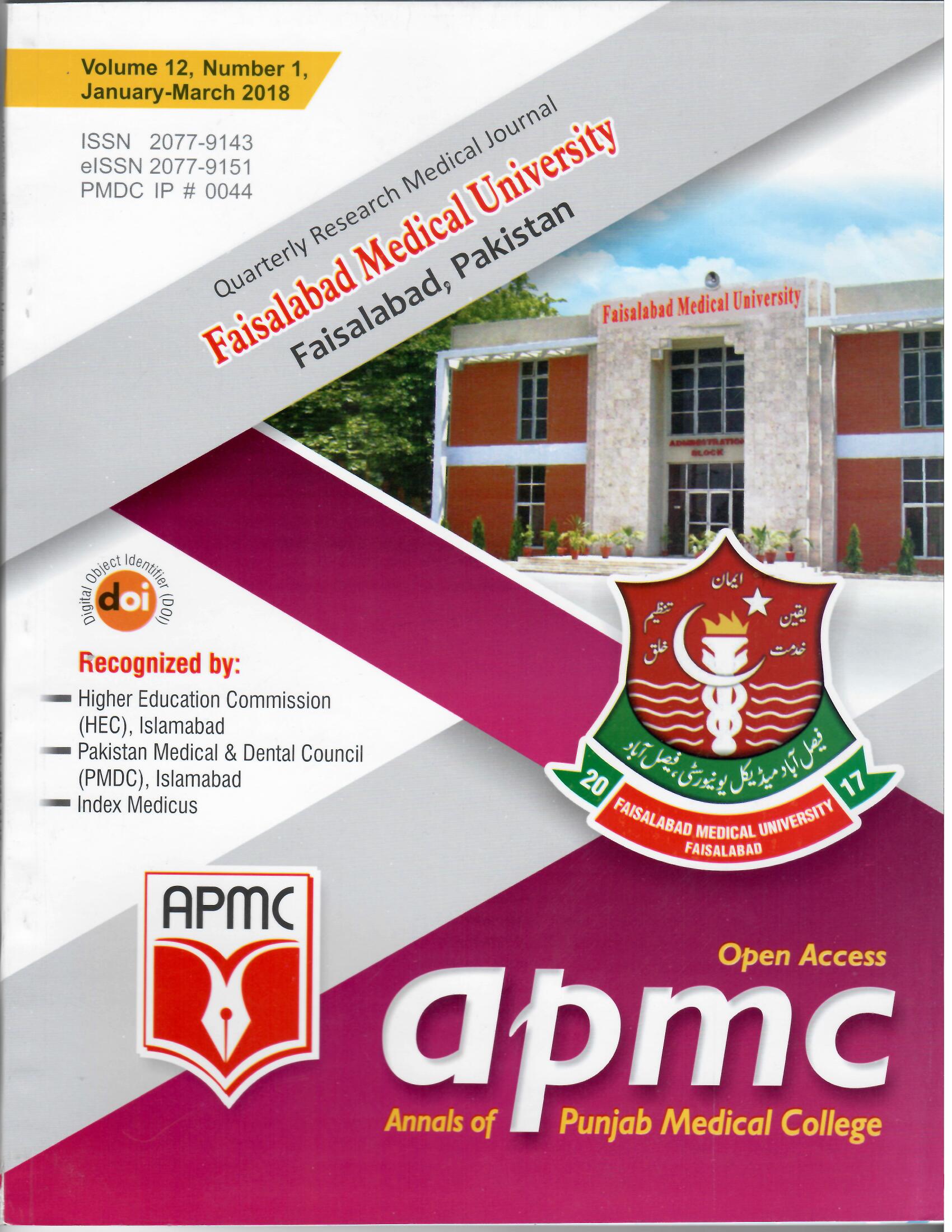Thyroid Dysfunction in High Risk Pregnancies
Abstract
Objective: Frequency of thyroid dysfunction in high risk pregnancies. Settings: Department of Obstetrics and Gynecology, Allied Hospital Faisalabad. Study design: Cross-sectional study. Duration of study: 16-06-2014 to 15-12-2014. Methodology: A total of 245 patients were included in this study. On the basis of TSH, T3, T4 reports thyroid dysfunction (hypothyroidism/hyperthyroidism) was observed. Results: Mean age of the patients was 29.43±5.21 years. Mean gestational age was 36.45±2.72 weeks. Thyroid dysfunction was observed in 63 patients (25.7%). Out of theses 63 cases, Hypothyroidism fond in 44 (69.9%) and Hyperthyroidism in 19 patients (30.1%). High risk pregnancy factors were IUGR in 85 patients (34.7%), GDM in 100 patients (40.8%), preeclampsia in 52 patients (21.2%) and IUFD in 8 cases (3.3%). Distribution of high risk pregnancy factors in cases of thyroid dysfunction (n=63) were as follows: IUGR in 17 cases (27.0%), GDM, 20 cases (31.7%), preeclampsia in 18 cases (28.6%). IUFD in 8 cases (12.7%). Stratification of effect modifiers was carried out. Conclusion: The rate of thyroid dysfunction is increased in pregnant women with high-risk pregnancy. Under the currently recommended screening method, the majority of thyroid dysfunctions may be missing. With a full awareness of high incidence of thyroid dysfunction in pregnant women with obstetrical or medical complications, consideration should be given regarding the screening efficiency during pregnancy.

 This work is licensed under a
This work is licensed under a 